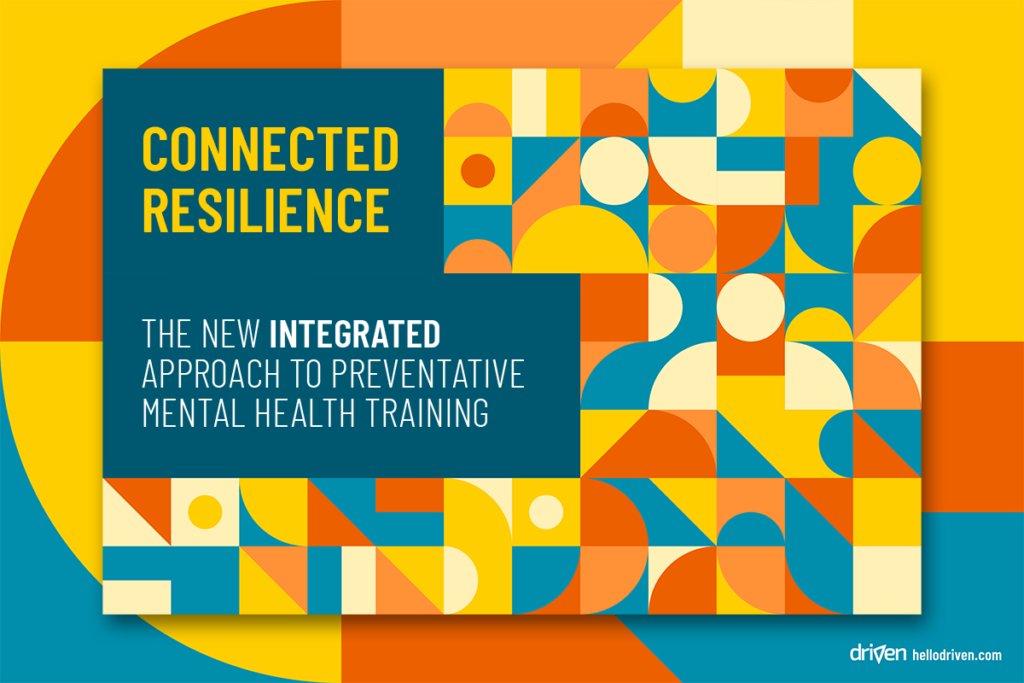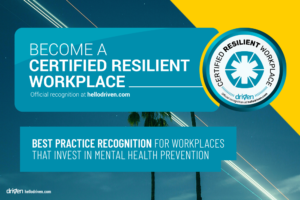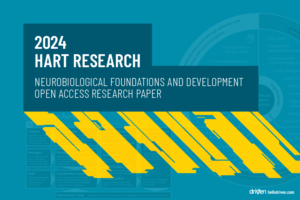Connected Resilience – The New Integrated Approach to Preventative Mental Health Training
Thankfully, we are finally moving beyond the age of reactive mental health and wellness programs that squarely put pressure on individuals to simply ‘lift their game’. This old approach broadly resulted in people not wanting to participate in training, recognising that resilience is not a one-way street.
Business particularly started feeling this trend through 2023 as many opted to leave workplaces where they didn’t feel supported and valued. Rather than try to be stronger to put up with unhealthy environments, people realised it’s far better to find workplaces who make the effort to care.
What a Connected Web We Weave
This is particularly relevant with developing resilience in people. While resilience is something we can show at an individual level – such as the determination to thrive despite extreme adversity – it is instead more about something we develop as a connected web of support.
Resilience in this sense is about the more relevant examples, where we need to deal with the everyday challenges and tasks we face. Lots of work to do, deadlines, ambiguous tasks, commuting, video calls, replying to emails, talking to people, making mistakes, things going wrong, juggling priorities, and so on.
These everyday things weigh on us over time, and if not handled with a level of resilience, it can lead to burnout, or other more serious mental health challenges.
Of Mice and Parents
Through our research we continually learn more about what really builds resilience. Here we see more and more the role of connection – the relationships we have, the support we give each other, how we talk and interact with people, and how we create an environment that supports resilience, rather than requires it.
…create an environment that supports resilience, rather than requires it
A simple analogy is that of building resilience in children – it starts with building resilience in the parents. This creates an environment that allows the child to learn and develop their own resilience. When parents aren’t interested in their own resilience and simply wants the child to be resilient, then it doesn’t bode well for the future of the child.
Resilience and Peace
In the same way, we see that the environment that leaders, managers, and peers create for each other, largely impact the ability of people to develop and activate their own resilience.
The Predictive 6 Factor Resilience Model (PR6) maps out the broad skills that help us all activate our resilience, and each skill can be developed. Though fostering an interest in developing these resilience skills involves both creating a psychosocially safe environment, as well as the relevant training and resources available to effectively guide this interest.

Enhancing resilience through the six domains of the PR6 is shown to be extremely valuable. From a 5-fold reduction in depression and anxiety risk, through to increased social confidence, resourcefulness, positive risk taking (innovation), and more. Simply, people enjoy their lives more, and do so in a sustainable way.
A Tale of Two Investments
How do we then develop an environment? We need a balance between individual and community investment:
- Individual investment includes attending workshops, accessing digital training, doing assessments, participating in activities, and investing in personal development
- Community investment includes doing training that improves relationships and connection between people, as well as creating a supportive environment. Training community resilience champions, establishing coaching expertise, and leadership taking accountability to address staff concerns raised or identified through surveys is also needed
When there is an overly strong expectation on the individual to invest in themselves without a balance of community-level effort, then this expectation can result in retreat, low program utilisation, and lack of improvement.
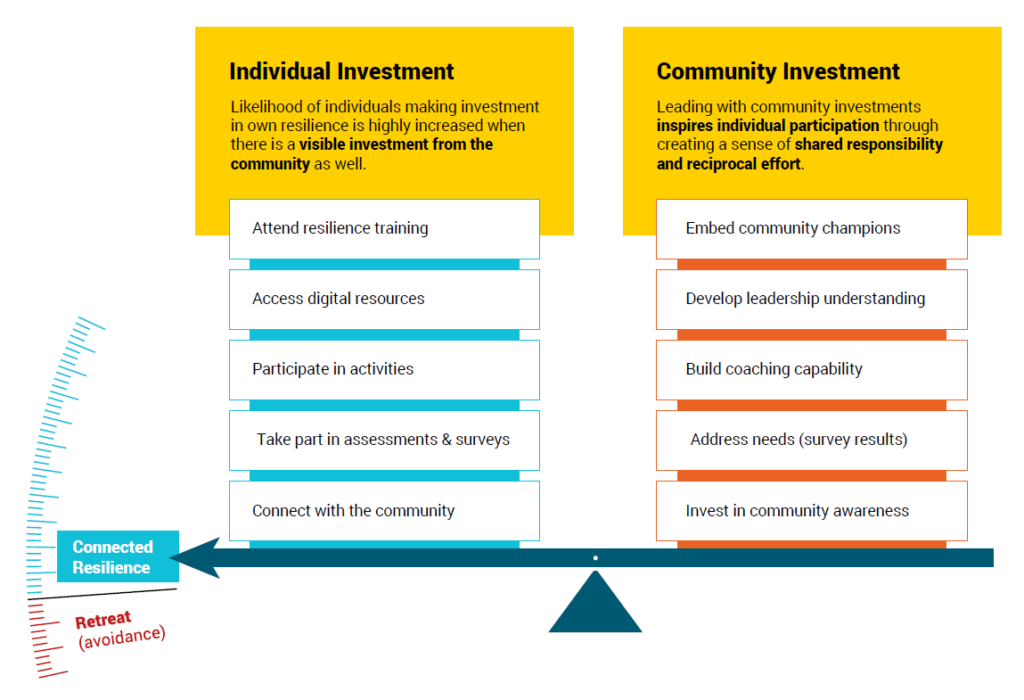
At a community level, a lack of balance can result in people not being protected against mental illness, and personal or social challenges (including natural disasters) can result in mental illness over time.
At an organisational level, an investment imbalance can result in higher employee turnover, as well as becoming less competitive over time in recruitment while performance suffers.
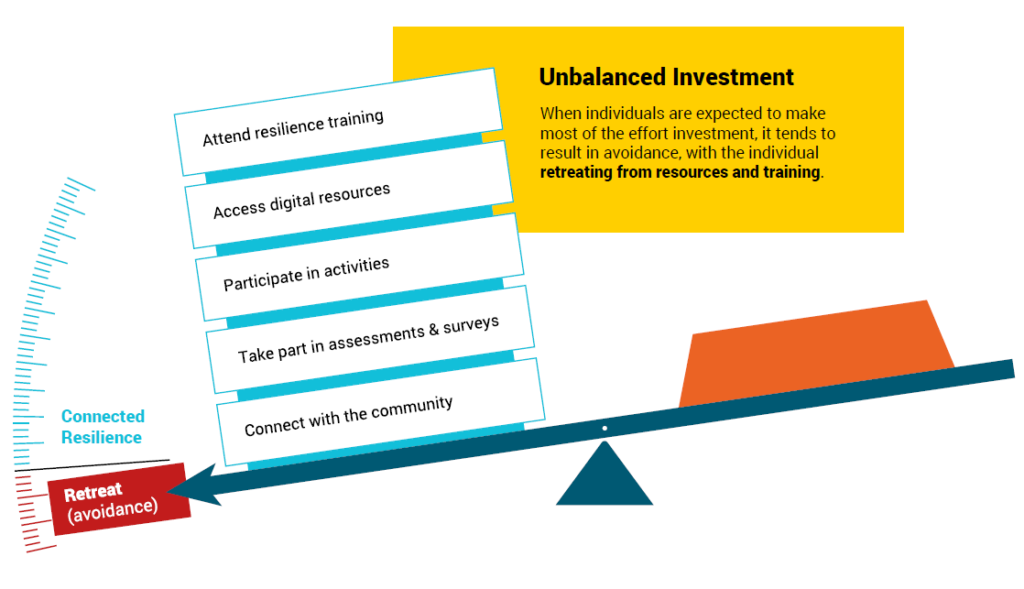
The key here is that building resilience as protective wellness is not simply about learning how to endure ever-worsening situations, but rather also about the community working on creating a healthy environment that supports resilience.
3 Ways to Develop Connected Resilience
Most value comes from making community investment first, preparing the environment to invite individual investment. Keep in mind – making individual investment mandatory will get compliance, but little growth.
1. Preventative Language Training for People Leaders
Leaders and managers have an outsized influence on the culture and environment they create. Due to this, learning in depth how to support resilience in teams – especially what to say and how – is becoming a crucial skill.
Not just in terms of creating a healthy team environment, but also due to the high financial and criminal penalties that managers and leaders my face if psychosocial hazards are not effectively managed. Managing risks here are not just about putting crisis helplines in place, but rather about preventative measures being taken to proactively manage and reduce risks that lead to mental illness and suicide.
An effective approach to training managers and leaders in preventative language is the Resilience First Aid program. A 2-day accredited suicide prevention program that takes a strength-based approach to proactively build mental health through resilience. This teaches an in-depth language protocol that builds resilience in teams. This training sets the stage for individual investment.
2. Create Broad Awareness
We noticed early on in our work on preventative mental health that a basic level of awareness on what resilience is already helps to develop an interest in personal development. This means clarifying ‘resilience’ across the six domains and the skills that activate resilience.
For this, we developed RFAST – Resilience First Aid Starter Training. A 2-hour course on connected resilience that introduces the six domains, helps to identify personal strengths and a resilience action plan, as well as base skills to identify resilience needs in others.
This quick training program is useful as a broad awareness program to upskill everyone in the workplace and align language towards prevention, and how we can start working together to create a harmonious and psychosocially safe environment.
3. Understand Needs Through Assessment
Being able to track a starting point, understanding key needs, and track progress over time is a key part of long-term success. The PR6 Resilience Assessment provides a fast and scientifically validated approach to get insight into teams, as well as help individuals learn about their own resilience.
This insight is useful to understand where investment can most directly benefit the resilience development of the team or organisation as a whole, speeding up the ability to develop connected resilience that permeates the culture.
We all have a role to play in the environment that we create for others, and consequently how we support the resilience of those around us. This makes training not simply something important for us individually, but for all those we connect with.
Start with Connected Resilience Training:
